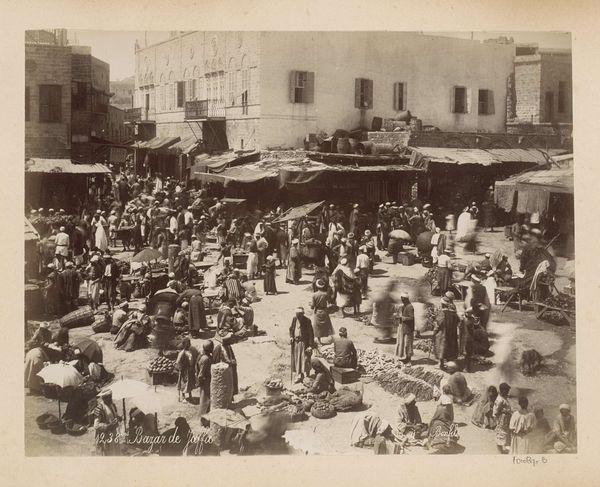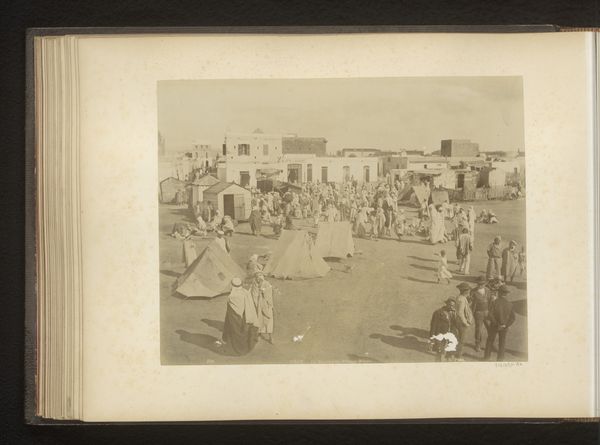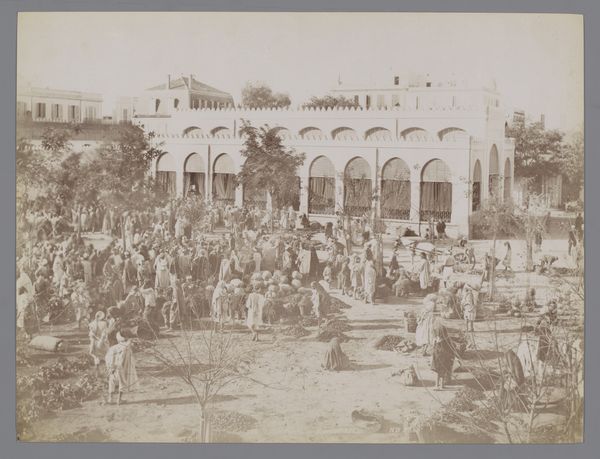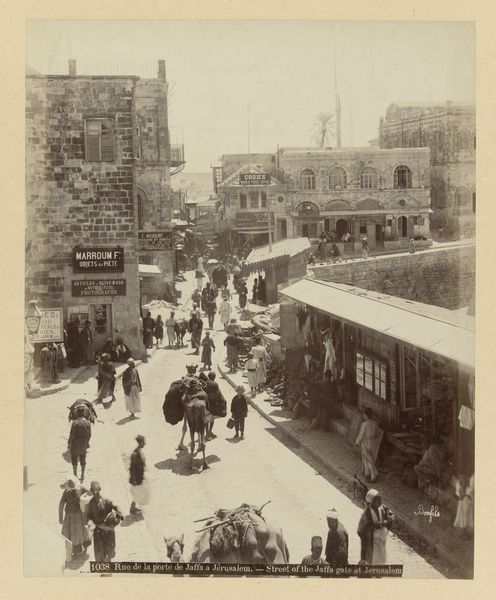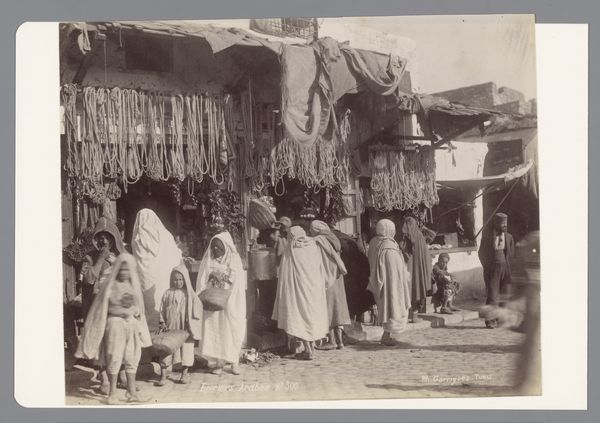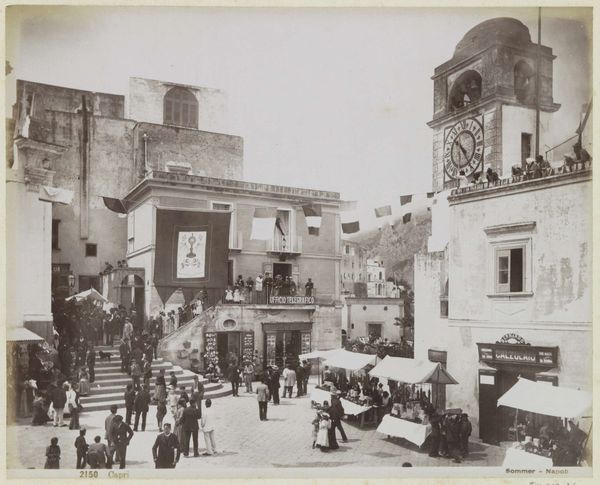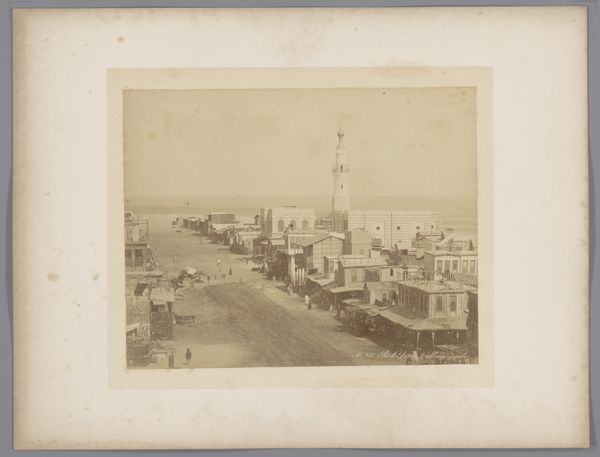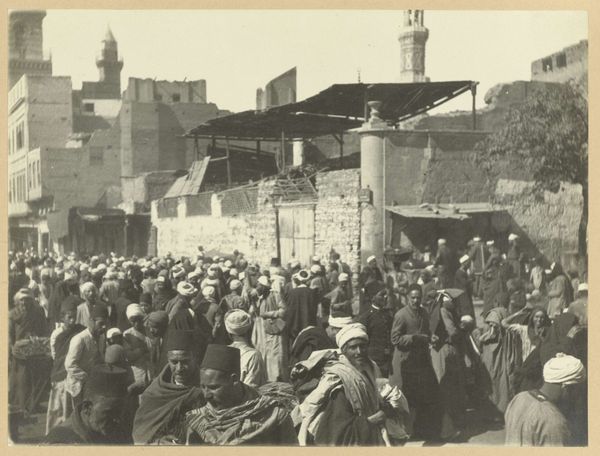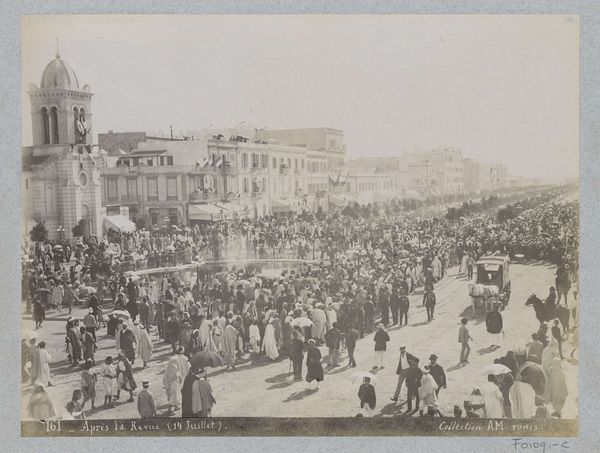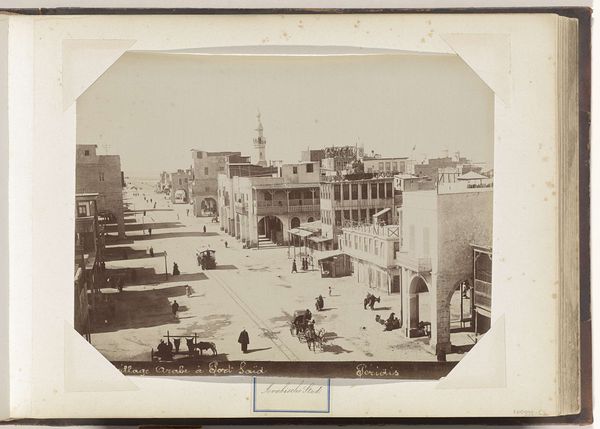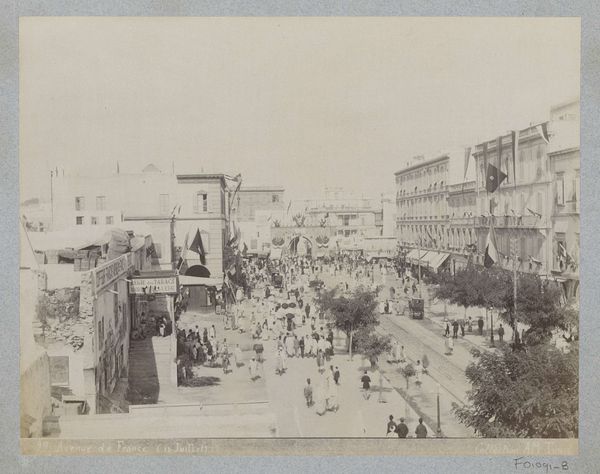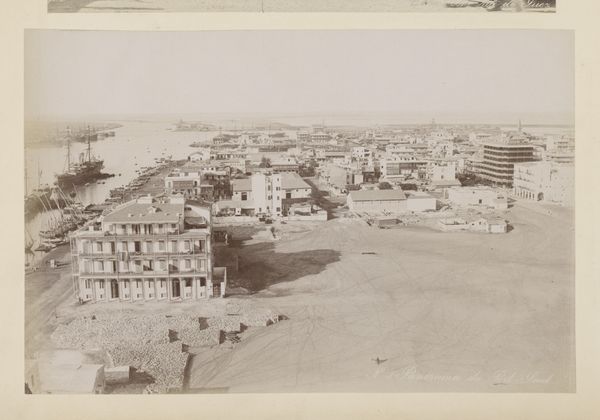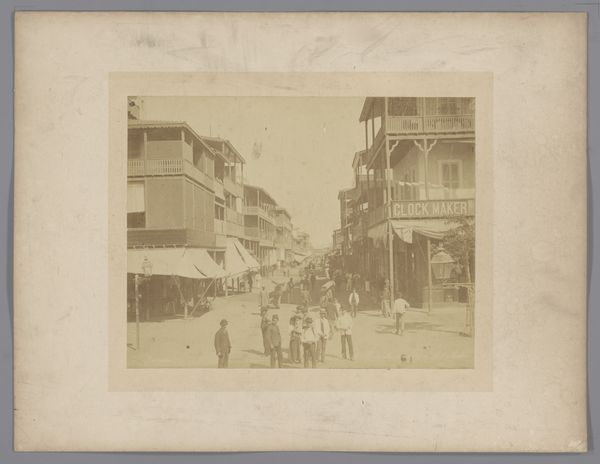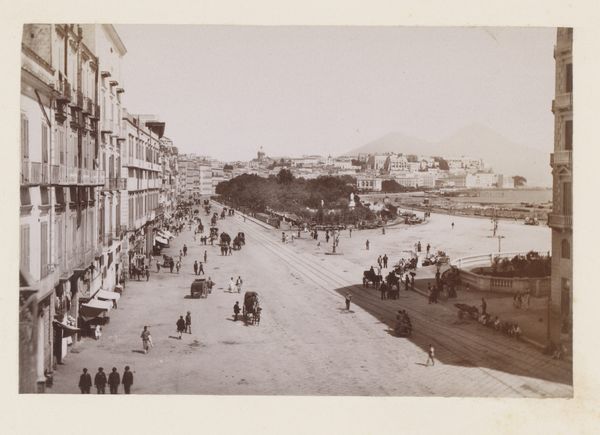
photography, albumen-print
#
landscape
#
photography
#
orientalism
#
19th century
#
cityscape
#
genre-painting
#
albumen-print
Dimensions: height 199 mm, width 255 mm
Copyright: Rijks Museum: Open Domain
Editor: This is a photograph titled "Groentehandelaren op een plein, vermoedelijk in Tunis," which roughly translates to Vegetable merchants in a square, supposedly in Tunis. It’s attributed to J. André Garrigues and was created sometime between 1860 and 1900 using the albumen print process. It has such an ethnographic feel, so teeming with figures. What strikes you when you look at it? Curator: The photograph is a classic example of Orientalism in the 19th century, a Western fascination with and often romanticized, sometimes inaccurate, portrayal of the "Orient." We need to ask, who was Garrigues photographing this for, and what image of Tunis, what political messages, were they hoping to convey to that audience? Look at the positioning of the figures, the density of the crowd, the relative absence of any identifiable individuals, this lends itself to a reading of a place, and people, radically different from the Western experience. Editor: So, beyond just documentation, there’s an element of constructing a particular narrative for a Western audience. Do you think this lens affects our understanding of Tunisian society at the time? Curator: Absolutely. Photography, especially at this early stage, wasn't just about capturing reality, it was about shaping perception. Think about the power dynamics inherent in who gets to represent whom. Was there consultation? A respectful collaboration? We are now increasingly conscious of the role institutions played in creating biased imagery. How was the image used? Did it reinforce colonial narratives about North Africa at the time? Editor: That's such an important point. It makes you wonder about the photographer's intentions and the impact of these images. Curator: Exactly! And it also compels us to seek out alternative narratives, different perspectives on this period. It's not enough to simply appreciate the image, we must interrogate the story it tells and the forces that shaped its creation and consumption. Editor: This makes me consider my own bias viewing this image. It really drives home how important historical context is in understanding art. Curator: Indeed. Art isn’t created in a vacuum; it is inextricably linked to socio-political discourse of its time.
Comments
No comments
Be the first to comment and join the conversation on the ultimate creative platform.
